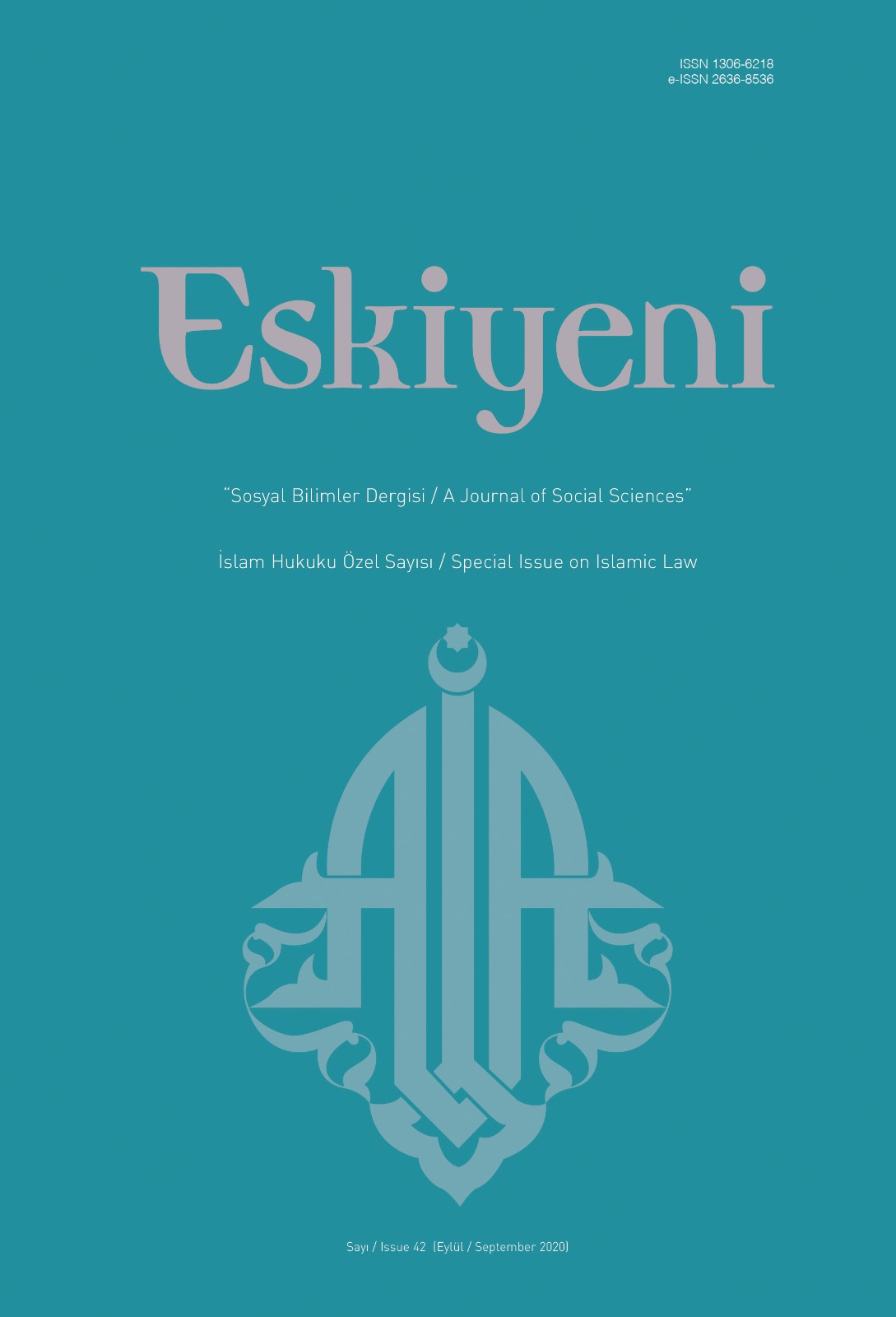İslam Hukuk Usulünde Müşterek Lafzın Manaya Delaletine Dair Tartışmalar
Discussions on the Denotation of the Common Term (al-Lafz al-Mushtaraq) to the Meaning in Methodology of Islamic Law
Author(s): Mahmut SamarSubject(s): Islam studies
Published by: Anadolu İlahiyat Akademisi
Keywords: Islamic Law; Methodology of Islamic Law; Polysemic Terms; Denotation;
Summary/Abstract: Al-Kitāb and the Sunnah (Prophetic tradition) are two basic sources of Islamic law that have become text in the historical process. To understand the nass in these two sources and to determine the best way for them are one of the most important issues of Islamic law. Science of alfāz (the wordings of the terms) in methodology of fıqh is a significant section that includes required rules in this sense. The controversies on fiqh generally depend on the meanings of the words which build the nass and to the deci-sions that acquire from these meanings. The reason is that science of alfāz includes the rules of making decisions from nass. Because of that alfāz has an extensive space in fiqh literature. The terms (alfāz) are subjected to taxonomy from different angles. In this respect there are four categories and twenty-four terms which are extremely significant. Because without the knowledge of the classification of alfāz, their relations with each other and hierarchy of them, it is hard to understand nass correctly. According to the aforementioned division, firstly the terms (alfāz) which their meanings were given are examined. There are four types of terms (alfāz) in this category which are also known as terms in terms of meaning or extent. These are ʿāmm, hāss, common, and muawwal terms. From these hāss has four parts; command, prohibition, mutlaq and muqayyad. Secondly, the terms (alfāz) which in terms of their use for meaning are examined. In this group there are haqiqah (truth), macaz (metaphoric meaning), sarīh (understandable) and qinaya (allusion). Thirdly, explicit and implicit terms in terms of the meaning are examined. They are totally eight terms that four of them explicit and other four of them implicit. Explicit terms are zāhir, nass, mufassar and muhqam. Implicit terms are hafī, mushqil, mujmal and mutashābih. Lastly, the terms depend on the shape of indication to the meaning are examined. These terms are indication of phrase, indication of mark, indication of nass and indication of demand. This separation belongs to Hanefite school of law, and Shaafite school of law also examined it. But there are some differentiations on separation and arranging be-tween them. On the other hand, there are also different approaches on provisions of the terms; and certitude and supposition of them. An argument in this respect is about the common term and its publicity. The common term as a subject in many scientific fields becomes one of the important subjects of Islamic law about indications of the terms. This subject is significant in many theoretical discussions and crucial to determine the judgement in many juristic issues. The scholars of fiqh put forward their ideas on the possibility, meaning, reasons, provision and publicity of the common term and made a rich literature. The common term as a reason for discussions caused to many arguments in the field. It is a comprehensive subject that nearly held in all areas of Islamic literature. Today contribution of the term (ألاشتراك اللفظي) is known as polysemy and the common term as one of the important elements of it may be seen in all languages. Today, the contribution of the term to the meaning becomes important to be an interdisciplinary subject. Polysemy is a well-known subject in many academic fields but although it is one of the significant areas of fiqh, there is no work that holds this subject in terms of Turkish language. To aim of this study is to fill that blank in Turkish literature and become the first step to that field. Therefore, this study focuses on the common terms in methodology of Islamic law. The aim of the study is to see the effect of the polysemic words (associations) of the language on controversies in fıqh, and thus to determine the role of fiqh scholars in reaching to different provisions on the same subject. For this purpose, the study focused on the place of the common term in the literature, its lexical and terminological meaning and also, the reasons of polysemic terms. Subsequently, the judgment and the publicity of the common terms were dealt with in a comparative way. Finally, the study was completed with the results which were achieved.
Journal: Eskiyeni
- Issue Year: 2020
- Issue No: 42
- Page Range: 961-984
- Page Count: 24
- Language: Turkish

